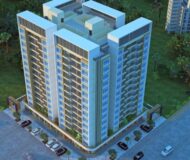
Price Wars or Price Trends? Deciphering Navi Mumbai’s Real Estate Market
In a recent development in Navi Mumbai, the sale of a plot near Palm Beach Road in Nerul, by the City and Industrial Development Corporation (Cidco), has sparked controversy and concerns among activists and builders alike. The plot was sold for a staggering Rs 6. 72 lakh per square meter, leading to worries about the increasing unaffordability of real estate in the city. This unprecedented sale price has triggered a debate on the implications of such prices on the city’s social and economic fabric.
Escalating Real Estate Prices
The sale of the Nerul-based Cidco plot at such an exorbitant rate has raised alarms among various stakeholders. At Rs 6. 72 lakh per square meter, it becomes evident that only the very wealthy or those with undisclosed incomes can afford to purchase properties in this part of Navi Mumbai. This exorbitant price tag is seen as a barrier to homeownership for the average citizen, making affordable housing increasingly out of reach.
CIDCO’s Revenue and Land Sales
The sale of this plot allowed Cidco to realize a substantial sum of Rs 165. 42 crore for a relatively small 2, 459. 33 square meter plot designated for residential-cum-commercial use. This price is undoubtedly significant revenue for the city’s development corporation. However, this impressive financial gain must be weighed against the potential social repercussions of such high real estate prices.
Controversial Bidding
The controversial aspect of this sale lies in the bidding process. Aramus majestic LLP, a relatively new player in the real estate market, quoted the record-breaking price for the Nerul plot, surpassing Cidco’s base price of Rs 1. 04 lakh per square meter by a considerable margin. It’s worth noting that this significant price hike was made by a company registered in August 2022. This suggests the speculative nature of the properties in new mumbai.
Citizen Concerns
Citizen groups and social activists have expressed their apprehensions about this trend of quoting exceptionally high prices for land. They argue that this trend is detrimental to the affordability of housing, which is a crucial concern in a city like Navi Mumbai. Many have suggested that Cidco should reconsider its approach and allocate land for creating open spaces and social infrastructure, thus benefiting the broader community.
Infrastructure Strain
The race for vertical development, triggered by these high land prices, could put significant pressure on the existing infrastructure of Navi Mumbai. Roads, water supply, and power infrastructure may struggle to keep up with the surge in construction and population, leading to congestion and other challenges. This is a crucial aspect to consider when evaluating the long-term sustainability of such aggressive land sales.
Real Estate Market Competition
One aspect that needs to be highlighted is the role of competition among builders. Cidco’s approach of selling a limited number of land plots has led to unhealthy competition among developers, driving up land prices. While this approach may benefit Cidco’s revenue in the short term, it raises concerns about housing affordability for the common people in areas like Nerul and Vashi.
A Historical Precedent
This is not the first time Cidco’s land sales have garnered attention. In the past, a contentious Seawoods plot, located in the Coastal Regulation Zone, received bids that were significantly below Cidco’s expectations. This demonstrates the volatility and unpredictability of the real estate market, which can vary greatly based on location and regulations.
Airports Authority of India’s Role
The relaxation of height limits by the Airports Authority of India (AAI) has also played a significant role in the rush among developers to acquire available land parcels. This relaxation has opened up new possibilities for development but, in conjunction with surging land prices, it adds another layer of complexity to the real estate market.
The recent sale of a Cidco plot in Nerul for a record-breaking price has raised concerns about the unaffordability of real estate in Navi Mumbai. While it undoubtedly benefits Cidco’s revenues, the long-term social and economic consequences should not be overlooked. The government and development authorities must strike a balance between revenue generation and ensuring that housing remains accessible to all segments of society. Careful planning, regulation, and a focus on social infrastructure are essential to maintaining the city’s livability and sustainability in the face of soaring real estate prices.


